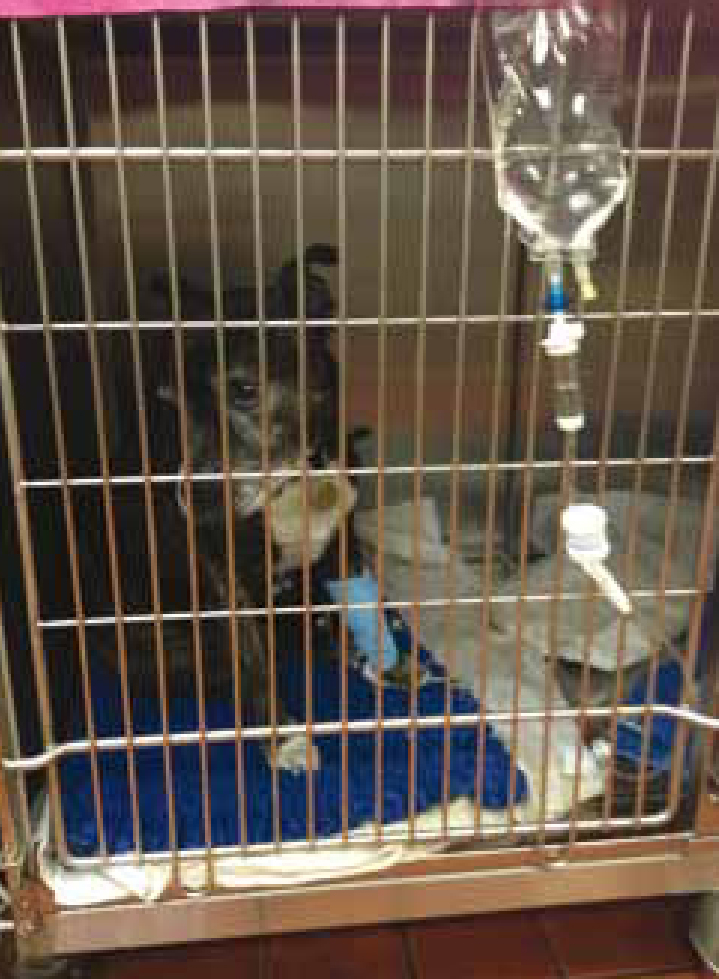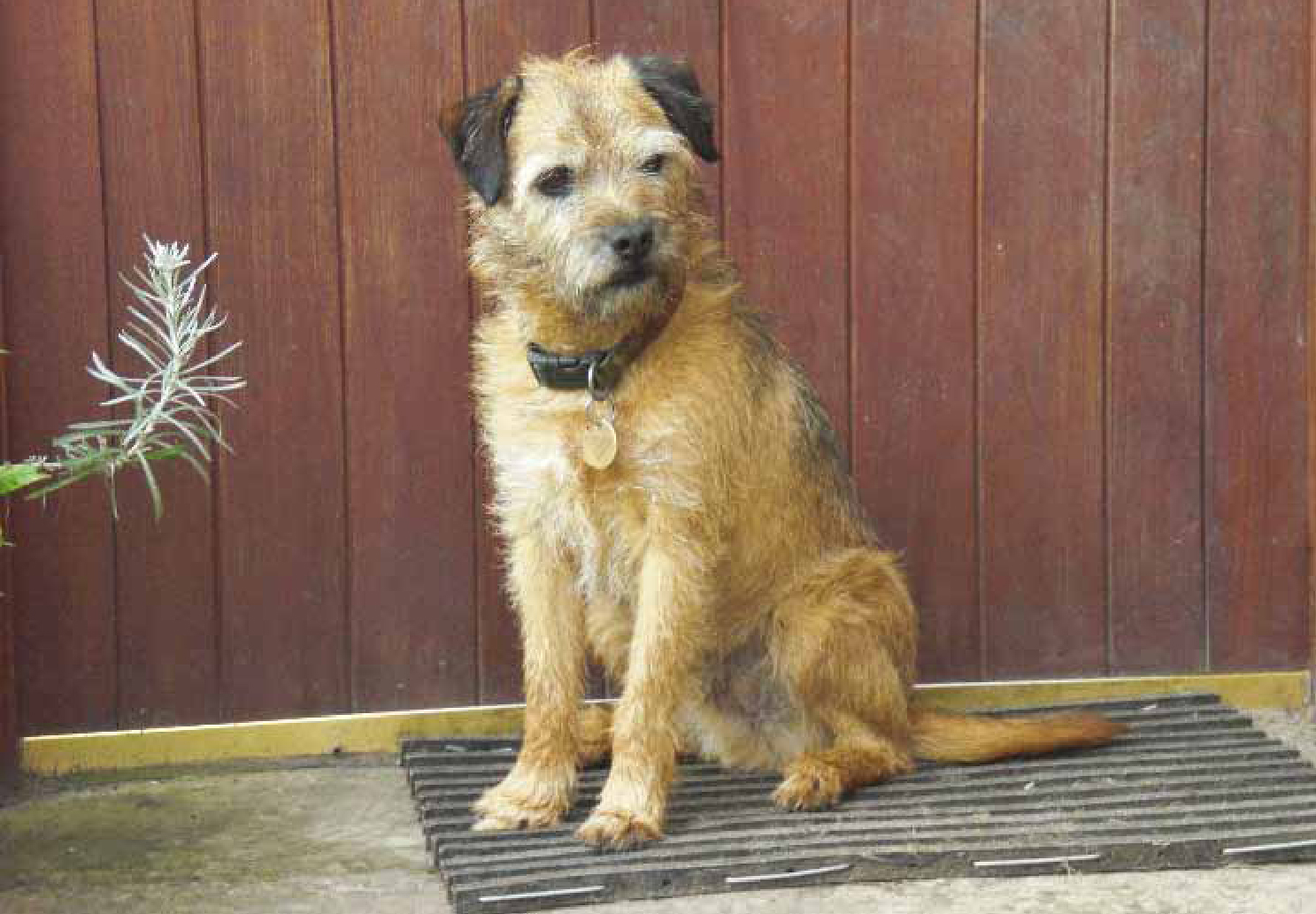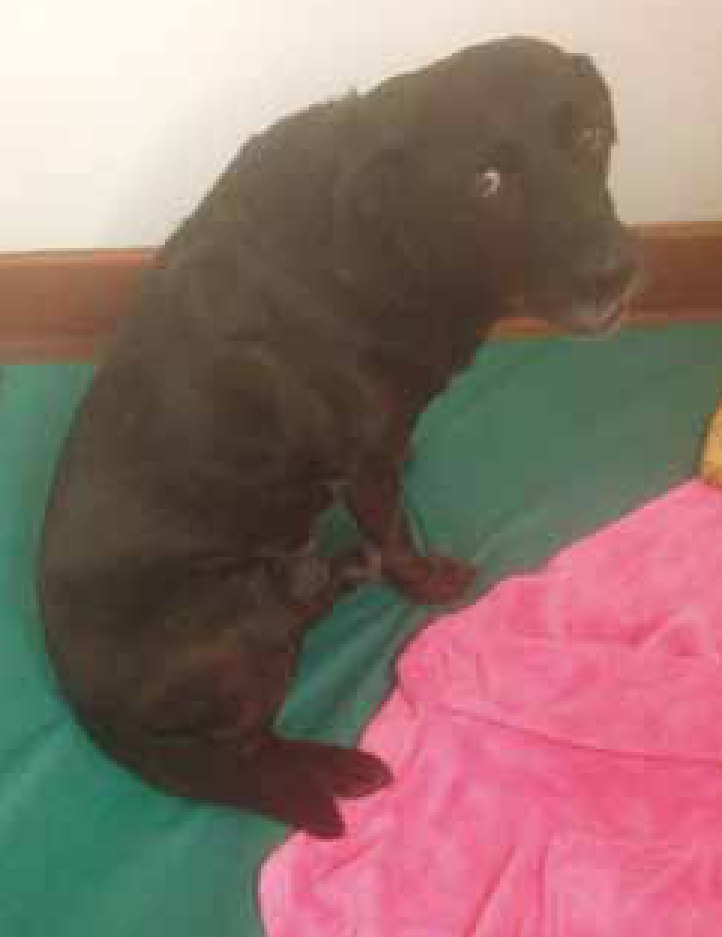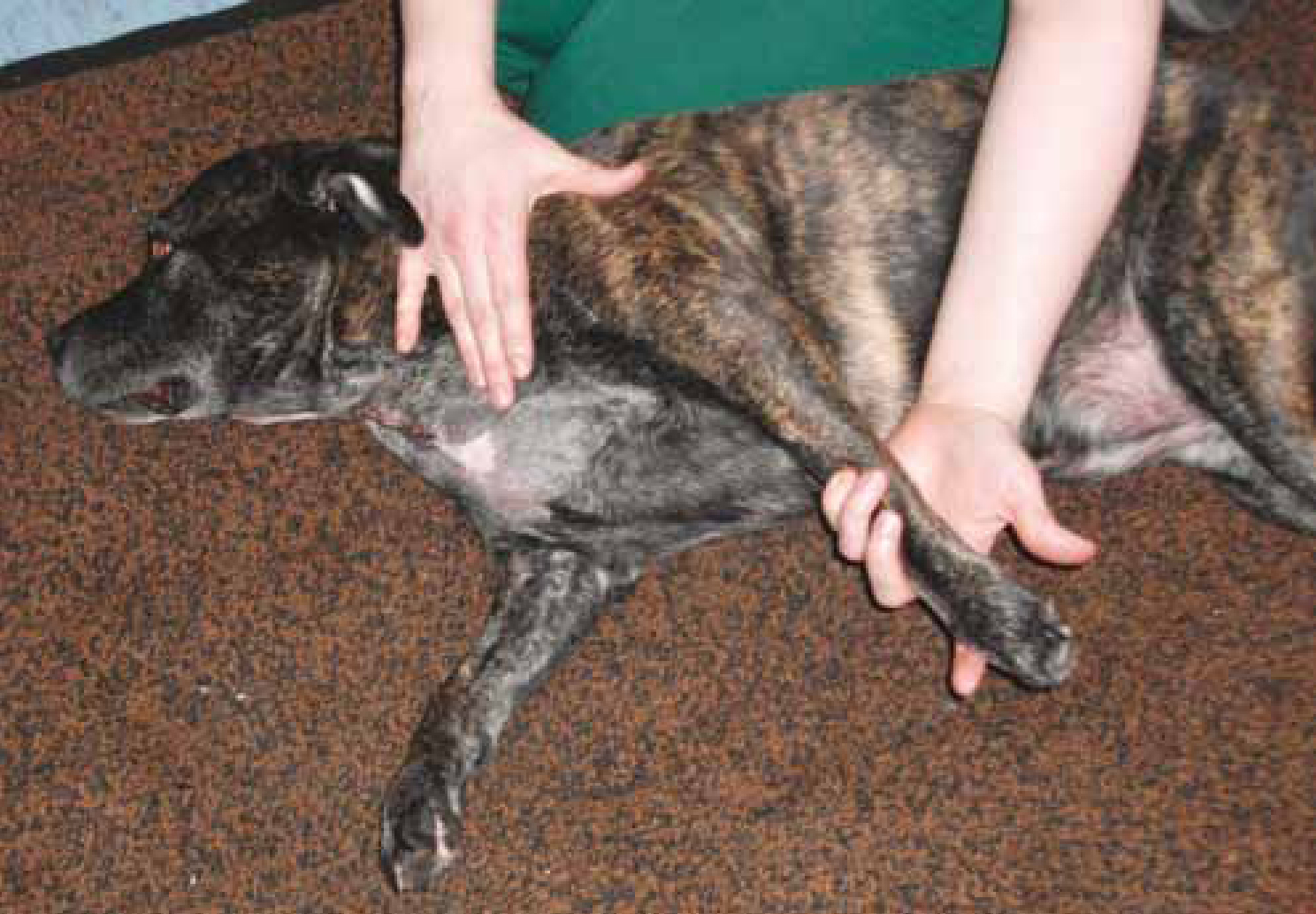Ageing animals seldom have a single disease, but instead have a unique combination of multiple organ disease with varying levels of dysfunction (Fortney, 2004). Such changes in organ system function, however, may be covert until the ageing animal is stressed by illness, hospital stay, or general anaesthetic procedure (Carpenter et al, 2005).
It is however important to note that poor health and old age are not synonymous. Veterinary personnel now regularly practise screening for age-related disease and educate owners on how to care for their ageing companions. Owners therefore are more aware of the health needs of their senior pets and expect a high standard of individualised patient care when they entrust them into the protection of the veterinary surgery (Hoskins, 2004).
The effects of age on the individual body systems are outlined below.
Alimentary tract
Elderly patients are less able to tolerate periods of inappetence (Urquhart, 2001). Although lower exercise levels and a reduced metabolism will result in some degree of obesity, inappetence in any elderly patient is a cause for concern and needs to be addressed — even in apparently obese patients (Urquhart, 2001). Details of type of food, amounts offered and consumed along with a body condition score and weight should be recorded daily on all patients' hospitalisation sheets.
Because of the high variability in the effects of age on dogs and cats, feeding management of the ageing pet must be highly individualised. A thorough assessment of the usual diet and feeding practices is required and a patient's individual daily energy requirement should be calculated on the basis of their bodyweight, age and disease. It is beyond the scope of this article to discuss senior nutritional requirements, however as a general rule a highly digestible diet is necessary as digestion is generally less efficient in ageing animals due to reduced liver function and gastrointestinal absorption and motility (Urquhart, 2001).
Elderly animals have a decreased thirst response (Wolf, 2006). This means they are susceptible to dehydration with illness or during hospitalisation. Such dehydration can obviously compromise already marginally functioning body organs and compound deficiencies in renal function (Wolf, 2006). Increasing the fluid content of food can help to prevent dehydration in patients who may not ingest sufficient fluid for their daily metabolic requirements (Urquhart, 2001). There is an increased incidence of constipation in elderly pets, which may also be alleviated by increasing the fluid content of their food (may require medication also). Constipation can be very uncomfortable for a patient thus they are less likely to eat and may also vomit thereby potentially exacerbating other conditions.
Fresh water must always be available and fluid input, urine production and hydration status must be monitored closely. Elderly animals are less tolerant of volume overload, hence aggressive use of fluid therapy may result in excessive intravascular and extravascular volume, leading to congestive heart failure and pulmonary oedema in ageing animals that are unable to excrete a salt and water load efficiently (Figure 1) (Carpenter et al, 2005). The goal of fluid therapy in aged animals, therefore, should be the correction of any specific deficits and the maintenance of adequate tissue perfusion and oxygen delivery.

Cardiovascular and respiratory system
Aged animals have a decreased cardiac reserve compared with that of younger animals (Carpenter et al, 2005). Cardiac disease is frequently encountered in ageing dogs and cats and specific conditions will require tailored nursing care. General considerations for patients with cardiac or respiratory compromise centre around minimising stress and ensuring patient comfort. Rest is an important consideration for the cardiac patient as wards are often busy 24 hours a day. Planning nursing interventions together wherever possible to minimise sleep interruption and allowing the patient some ‘quiet time’ with the lights down are conducive to rest. As many of these patients will be prescribed diuretic medications, they are likely to be experiencing polydipsia and polyuria. It is therefore essential to ensure they have access to water and are provided with frequent opportunities to eliminate. If ageing canine patients are to be taken outside to urinate, they must be taken gently at their own pace; the use of a harness and lead is desirable in patients with a compromised airway.
Urinary system
Many elderly patients will be suffering from varying degrees of renal compromise and may drink and urinate in excess of normal calculated volumes (Chandler and Middle cote, 2011). This results in many elderly patients being polyuric or incontinent, thus special consideration should be given to choice of bedding material provided, along with toilet facilities and opportunities for elimination. Urine-contaminated bedding must be changed quickly and urine-contaminated fur washed and carefully dried. Clipping of hair around the genital region may be required, especially in longer coated breeds, along with the application of a barrier cream to help prevent urine scalds.
Elderly animals can become fussier with age so it is important to elicit the essential information regarding toilet habits from the owner — what type of cat litter is preferred, does the dog prefer to eliminate on grass or concrete, will it only toilet in response to a particular command? Such foibles are more common in elderly animals which tend to be resistant to change (Urquhart, 2001).
Hepatic system
The overall mass of the liver decreases with increasing age, leading to a decrease in overall hepatic function, including drug clearance (Muravchick, 2000). A decrease in hepatic function causes an increase in the plasma half-life of drugs which are dependent on hepatic metabolism or excretion (Davies, 2010). The veterinary surgeon will base their choice of therapeutic agent on a risk:benefit analysis which generally cannot be performed without a thorough evaluation and health screening of the patient (Davies, 2010). It is worth remembering that the ageing process continues throughout life, therefore patients on long-term medications require regular monitoring to reassess their status and drug doses or frequency may need to be adjusted accordingly.
The liver produces many of the proteins involved in the clotting cascade, therefore if liver disease is known or suspected care must be taken when performing venepuncture and use of peripheral vessels is advocated (Frogley, 2013). Performing clotting times and a platelet count will help identify potential problems and this should be carried out prior to invasive procedures such as biopsying the liver (Saint, 2013).
Musculoskeletal system
Within the musculoskeletal system many physical changes become apparent as time passes, a number of which can be profound. Osteoarthritis is the term given to a progressive, irreversible joint disease associated with cartilage degeneration, modification of subchondral bone, development of osteophytes, synovitis and fibrosis of the joint capsule (Millis et al, 2004). There is often a gradual loss of muscle mass in the ageing animal, leading to a degree of muscle weakness, mostprofoundly in the limbs. Such musculoskeletal changes make it difficult for animals to mobilise on smooth or slippery surfaces. While veterinary nurses frequently advise clients regarding modification of the home environment, it is essential not to overlook similar aspects within the hospital environment. Use of non-slip mats should therefore be considered on slippery surfaces where necessary. Rubber mats from consulting tables are a good substitute where specific floor mats are not available (Urquhart, 2001).
Elderly dogs enjoy ‘pottering’ and even hospitalised dogs should be allowed time to wander, maybe in an outdoor run. Frequent short walks will help to exercise stiff joints and ensure plenty of opportunities for elimination, and enhance the wellbeing of the patient (Figure 2). Elderly cats often spend long periods of time sleeping, however encouraging them to move around can be beneficial to circulation and joint health. A quiet consulting room can often be utilised for this purpose.

Animals with reduced mobility, loss of muscle mass and osteoarthritis often prefer to stay in one position, increasing their risk of developing a decubitus ulcer on prominent bony areas (Campbell and Parish, 2010). Relief of pressure via the padding of bony prominences and use of memory foam mattresses along with vigilant monitoring and the implementation of a detailed nursing care plan should help avoid this (Figure 3).

Veterinary nurses should ensure that gentle handling and the minimum possible restraint is applied during examination and venepuncture. As joint degeneration and muscle atrophy are common amongst ageing patients, restraint may well be painful for affected individuals. Physiotherapy may be of benefit here and veterinary nurses can perform a number of physiotherapy techniques under the direction of a veterinary surgeon (Figure 4). Basic techniques including massage, effleurage (gentle stroking of the limbs towards the heart) and passive joint movement, if carried out correctly and regularly, can improve circulation, maintain and increase joint mobility, decrease pain, promote muscle relaxation, aid in the healing process and prevent stiffness (Sharp, 2010).

Integument
Increased sebum production in some animals causes the coat to lose its gloss, look greasy, accumulate dirt more quickly and cause an unpleasant odour; bathing and grooming may help alleviate this. Older pets tend to be less fastidious regarding grooming and require help during their stay to keep clean and well groomed. However care must be exercised as over-zealous grooming may be uncomfortable for animals with arthritis or reduced muscle mass (Urquhart, 2001). Regular grooming using a soft-bristled brush or a massaging groomer helps to reduce anxiety and provide a feeling of wellbeing, encourages surface blood circulation and provides the opportunity to check the coat and skin and clean away ocular and nasal discharges using damp cotton wool. It also provides the additional benefit of social interaction and stimulation for patients (Chandler and Middlecote, 2011).
In addition, lack of mobility affects the growth of claws, and veterinary nurses should be aware of this, monitoring and clipping claws as necessary.
Immunosenescence
Ageing is associated with a decline in functional competence of the immune system, sometimes referred to as immunosenescence (Rosato and Salsano, 2008). This can be defined as the multifactorial complex of changes that occur in the immune system of elderly individuals that predisposes to increased morbidity and mortality due to infection and agerelated pathology (Rosato and Salsano, 2008). Strasser et al (2000) investigated age-related changes in the parameters of innate and acquired immunity in German Shepherd dogs. They concluded that the observed age-related changes in the canine immune system were probably among the main causes for multimorbidity of old age, affecting life expectancy and mortality in the dog and should be recognised and considered by veterinary personnel.
There is conflicting evidence regarding increased wound infection rates in senior animals. A review of current literature would suggest that other factors, including concurrent infections at distant sites or the presence of endocrinopathies, likely influence wound infection rates (Sussman and Dyson, 2001; Hoskins, 2004; Hanks and Spodnick, 2005). Wound healing is reported as delayed in senior humans (Holt et al, 1992) and rats (Peterson et al, 1995). Hoskins (2004) suggested the effect of increasing age on wound healing in dogs and cats is questionable and probably not clinically significant; however, concurrent pathological problems such as hyperadrenocorticism, diabetes mellitus, or hypoproteinaemia negatively affect wound healing. Despite conflicting evidence regarding rates of wound healing among ageing patients, there is clear evidence to support an overall decline in functional competence of the immune system (Strasser et al, 2000; Rosato and Salsano, 2008). Veterinary nurses must be mindful of this fact and ensure an aseptic technique is used during all invasive procedures and nursing interventions.
Nervous system
A number of neurological diseases occur primarily or exclusively in older dogs and cats, with age-related degenerative brain disease commonly observed (Hoskins, 2004). This condition often manifests as abnormal behavioural activity which results in progressive deterioration of sensory integration and motor capabilities. Loss of cognitive function or sensory input with age results in sleepiness/unnatural drowsiness (somnolence), alterations in sleep-wake cycles, and inappropriate elimination (Hoskins, 2004). Such symptoms can make these patients difficult to manage in a hospital environment as they may become easily confused and distressed when removed from the familiarity of their home surroundings. Trying to mimic the pet's ‘usual routine’ wherever possible may help such patients settle a little better.
It is important to note that the onset of behavioural abnormalities in older animals may result from structural brain disease such as tumour formation, hence it must never be assumed that brain ageing is solely responsible for any abnormal behaviours observed. Clinical evaluation and diagnostic tests are warranted in patients displaying abnormal behaviours.
Conclusion
Ageing itself is not an illness; it is a stage of life. It does however result in a gradual deterioration in the delicate interrelationships among the body systems, which predisposes them to acquired disease and progressive and irreversible change. Veterinary nurses therefore must develop an appreciation of such change and its effects on the different body systems, in order that they may implement high quality, individualised care for the ageing inpatient.
